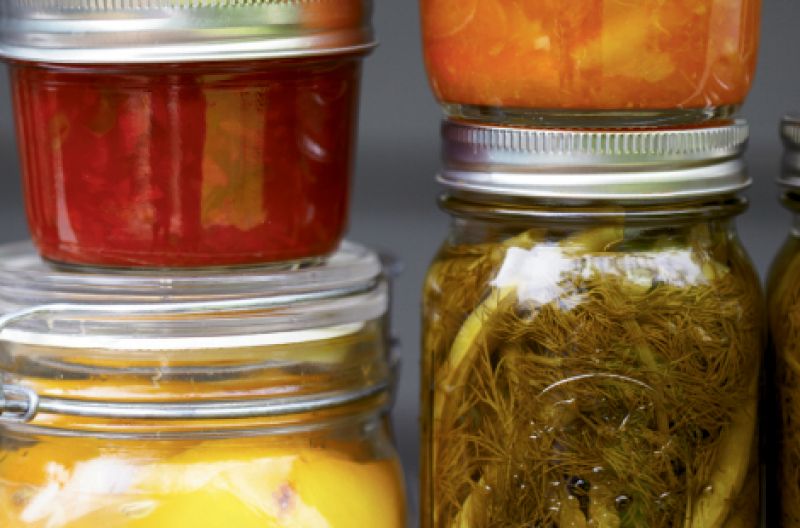
This isn’t your grandmother’s kitchen. Attorneys Martha Rhodes and Lee Walters are spicing up old-time canning favorites (think mint and bourbon peach jam and balsamic strawberry syrup), even chronicling their adventures in a fresh new blog, A Bit of a Pickle (bitofapickle.wordpress.com). Several times a week, the two convene downtown in Martha’s kitchen to pool their goods (like red peppers and citrus from their backyards, apples from the Upstate, and local Bartlett pears) and test out new concoctions. It’s a smart pursuit, for sure, given our area’s abundance of fresh produce. Plus, asks Lee, “What’s better than giving friends summer tomatoes at Christmas?”
To learn how to “put up” some of their favorite recipes, read on.
About Water Bath Canning
It’s a process that uses boiling water to destroy active bacteria in high-acid foods (citrus, pickles, tomatoes, etc.), making them safe for later consumption. Here, Martha and Lee offer a quick overview, but check out their recommended reading (below) to learn more about this method.
You'll Need:
1. Water bath canner with rack and lid (available at Wal-Mart, Target, and anywhere that sells culinary equipment)
2. Jars, lids, and screw bands
3. Jar lifter for easy removal of hot jars from canner
4. Funnel or jar filler to pack small food items into jars
5. Bubble Freer spatula, plastic knife, or non-metal spatula
6. Lid wand with magnet on the end to remove lids from hot water
Basic Steps:
Sterilize
Clean jars in the dishwasher or place in water bath canner and add water; simmer 10 minutes. Bathe lids in hot water until ready to pack.
Prepare Food
Wash produce thoroughly. Prepare ingredients according to recipe.
Pack
Add food to hot jars according to recipe and ensuring proper “head space” (space from the top of the jar to the food or liquid in the jar). Wipe rim and side of jar. Center lid on jar and apply screw band “fingertip tight” (as tight as possible without exerting extra force).
Process
Place sealed jars in canner. Adjust water level to cover jars by one inch. Cover and boil over high heat. Count recipe processing time after full boil
is reached.
Test
Remove jars and place on a clean, dry towel. The lids should make a popping sound after a few hours, or after cooling overnight. If the center dents when you press on the lid with your finger, it has not sealed properly.
Learn More:
Find how-to advice and new recipes on Martha and Lee’s blog,
bitofapickle.wordpress.com, or hunt down a title from their resource library. They recommend: Well-Preserved: Recipes and Techniques for Putting Up Small Batches of Seasonal Foods by Eugenia Bone (Clarkson Potter); Putting Up: A Year-Round Guide to Canning in the Southern Tradition by Steve Downdney (Gibbs Smith); and Ball Complete Book of Home Preserving (Robert Rose, Inc.)